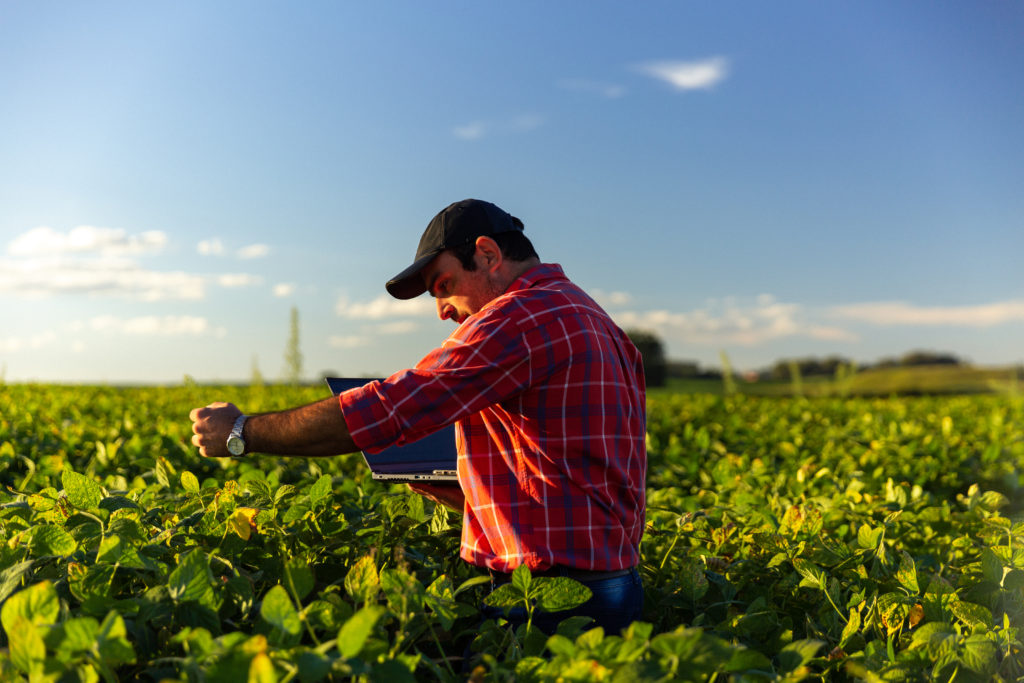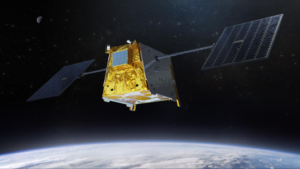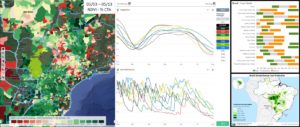
Tackling Today’s Food Supply Chain Challenges With Data-Powered Insights Is a Collaborative Effort
For many of us, it’s easy to take for granted that food will always be available when we want it, but the reality is that global food supply is extremely volatile and takes close coordination between many people up and down the supply chain. And as our global food supply becomes more and more interconnected, the opportunity for collaboration across specialties is only increasing.
Our global food supply chain is facing great challenges today — challenges that no single organization can solve on their own. And when it comes to tackling today’s global food supply chain challenges, collaboration with experts across the all steps of the chain is at the heart of our work at EarthDaily Agro.
EarthDaily Agro’s satellites monitor 92% of the Earth’s surface on a daily basis
EarthDaily Agro is a leading analytics provider for the agriculture industry that helps leaders solve their business challenges using satellite-based Earth Observation for more informed, more confident decisions. From the field to the grocery store, Earth Observation helps organizations collaborate effectively at all stages of the food supply chain.
• Planting: Farmers must make numerous crucial decisions during planting — decisions that can carry a sizable influence positively or negatively on their ultimate crop output. As such, it’s imperative as a farmer to make planting decisions based on precise, reliable data. Using Earth Observation, farmers and the organizations that support them can determine not only what crops to plant where, but also when. What’s more, field-level satellite imagery informs which fertilizers, pesticides and other inputs will be required across different zones within a given plot. Meanwhile, historical data provides valuable insights on how land has performed in the past to guide yield forecasts for the approaching season.
• Growing: While a successful planting season is a crucial foundation for crop production, well begun is only half-done. Agriculture is an inherently risk-involved industry, and any number of adverse circumstances can arise in the field with little to no warning throughout the growing season. Drought, pests and more can all put a crop’s health in jeopardy before it matures. With regionwide monitoring, though, Earth Observation helps farmers and their stakeholders detect early warning signs before trouble strikes, helping them minimize adverse effects by taking action proactively.
• Harvest: By the time a crop is ready for harvest, its yield becomes particularly important for downstream stakeholders. Commodity traders, food and beverage manufacturers and more all depend on farmers’ outputs. If a crop’s harvest is delayed or its yield is smaller than anticipated, impacts can trickle all the way to consumers through increased prices and even supply shortages. When it comes to protecting supply and generating demand, Earth Observation is a valuable tool for organizations. By monitoring farmers’ progress during harvest, stakeholders can detect early warning signs of potential supply impacts and take corrective action to their sourcing strategy — ultimately ensuring healthy supply and demand for consumers.
• Distribution: Even after a crop has been harvested, though, it can still be subject to a number of threats before it reaches its end destination. Today’s agri-food supply chain is more interconnected and interdependent than ever before — meaning that a disruption anywhere can carry ripple effects everywhere. Earth Observation streamlines food logistics and transportation by monitoring for disruptive events such as extreme weather, natural disasters and more. Through global monitoring updated daily, Earth Observation helps organizations worldwide avoid potential risks even at the last mile of the supply chain.
While EarthDaily Agro’s technology is best-in-class, we’re only half the equation. The other half comes through the partnerships we create with our customers across the agri-food supply chain who are seizing some of the world’s most challenging business opportunities and solving some of the world’s most challenging social and environmental challenges.
EarthDaily Agro tracks 23 key crop monitoring variables. For example, the dashboard above from May 2022 measures normalized difference vegetation index across Brazil
Data is our specialty, but it’s ultimately what organizations do with data that makes impact possible — and this is the intersection where collaboration becomes paramount. Data measurement is nothing without data modeling — and likewise, data modeling is nothing without data measurement. Now is the time to reimagine how the combined strengths of measuring and modeling can work together to create a better, more efficient and more reliable food supply chain.
To learn more about how geospatial analytics from EarthDaily Agro can make more possible for your business, contact our team.
About the Author
Pedro Ronzani is EarthDaily Agro’s Business Manager. With expertise across agriculture and business development in multiple organizations, Ronzani supports EarthDaily Agro’s customers across Latin America through understanding their needs and developing custom solutions. He is based in São Paulo.



